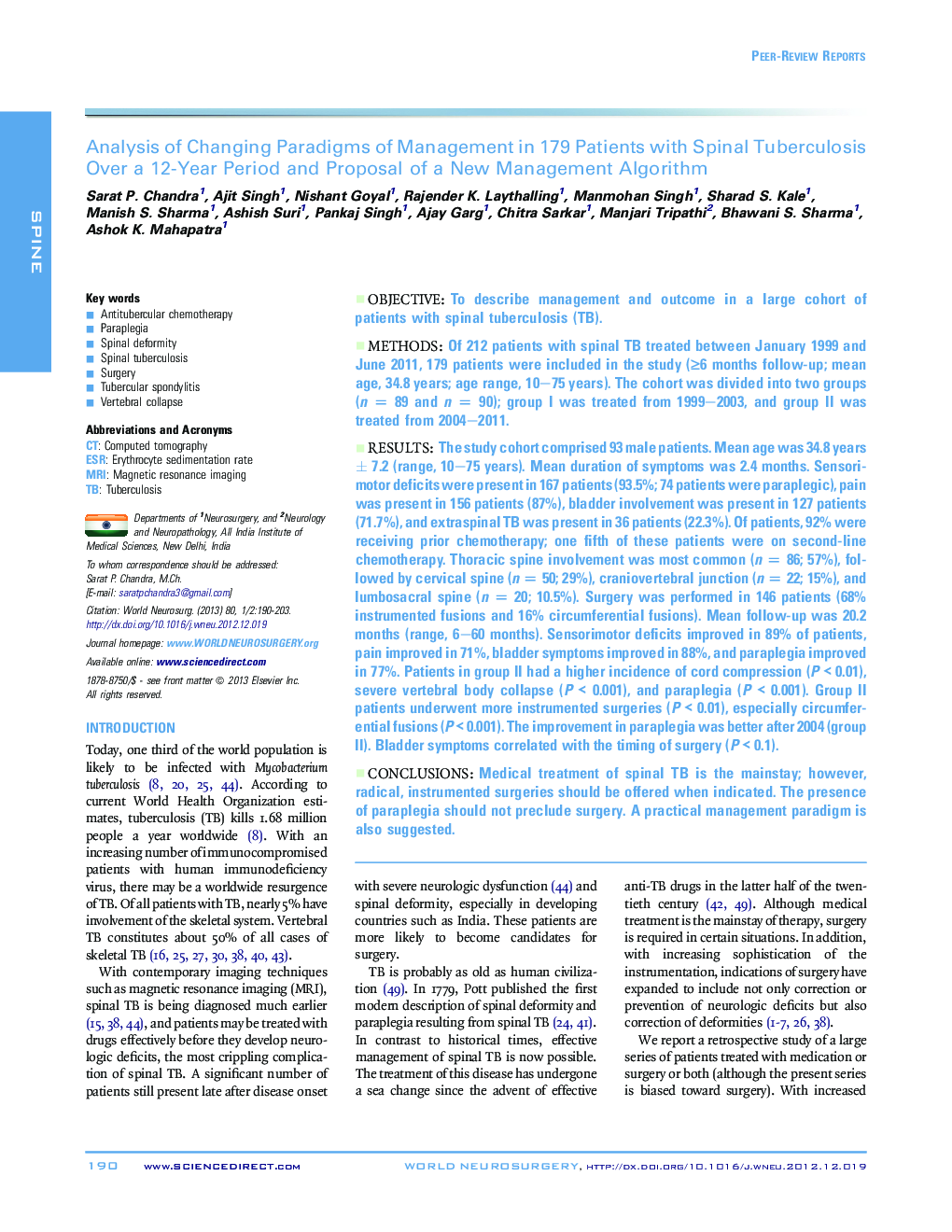| Article ID | Journal | Published Year | Pages | File Type |
|---|---|---|---|---|
| 3096283 | World Neurosurgery | 2013 | 14 Pages |
ObjectiveTo describe management and outcome in a large cohort of patients with spinal tuberculosis (TB).MethodsOf 212 patients with spinal TB treated between January 1999 and June 2011, 179 patients were included in the study (≥6 months follow-up; mean age, 34.8 years; age range, 10–75 years). The cohort was divided into two groups (n = 89 and n = 90); group I was treated from 1999–2003, and group II was treated from 2004–2011.ResultsThe study cohort comprised 93 male patients. Mean age was 34.8 years ± 7.2 (range, 10–75 years). Mean duration of symptoms was 2.4 months. Sensorimotor deficits were present in 167 patients (93.5%; 74 patients were paraplegic), pain was present in 156 patients (87%), bladder involvement was present in 127 patients (71.7%), and extraspinal TB was present in 36 patients (22.3%). Of patients, 92% were receiving prior chemotherapy; one fifth of these patients were on second-line chemotherapy. Thoracic spine involvement was most common (n = 86; 57%), followed by cervical spine (n = 50; 29%), craniovertebral junction (n = 22; 15%), and lumbosacral spine (n = 20; 10.5%). Surgery was performed in 146 patients (68% instrumented fusions and 16% circumferential fusions). Mean follow-up was 20.2 months (range, 6–60 months). Sensorimotor deficits improved in 89% of patients, pain improved in 71%, bladder symptoms improved in 88%, and paraplegia improved in 77%. Patients in group II had a higher incidence of cord compression (P < 0.01), severe vertebral body collapse (P < 0.001), and paraplegia (P < 0.001). Group II patients underwent more instrumented surgeries (P < 0.01), especially circumferential fusions (P < 0.001). The improvement in paraplegia was better after 2004 (group II). Bladder symptoms correlated with the timing of surgery (P < 0.1).ConclusionsMedical treatment of spinal TB is the mainstay; however, radical, instrumented surgeries should be offered when indicated. The presence of paraplegia should not preclude surgery. A practical management paradigm is also suggested.
